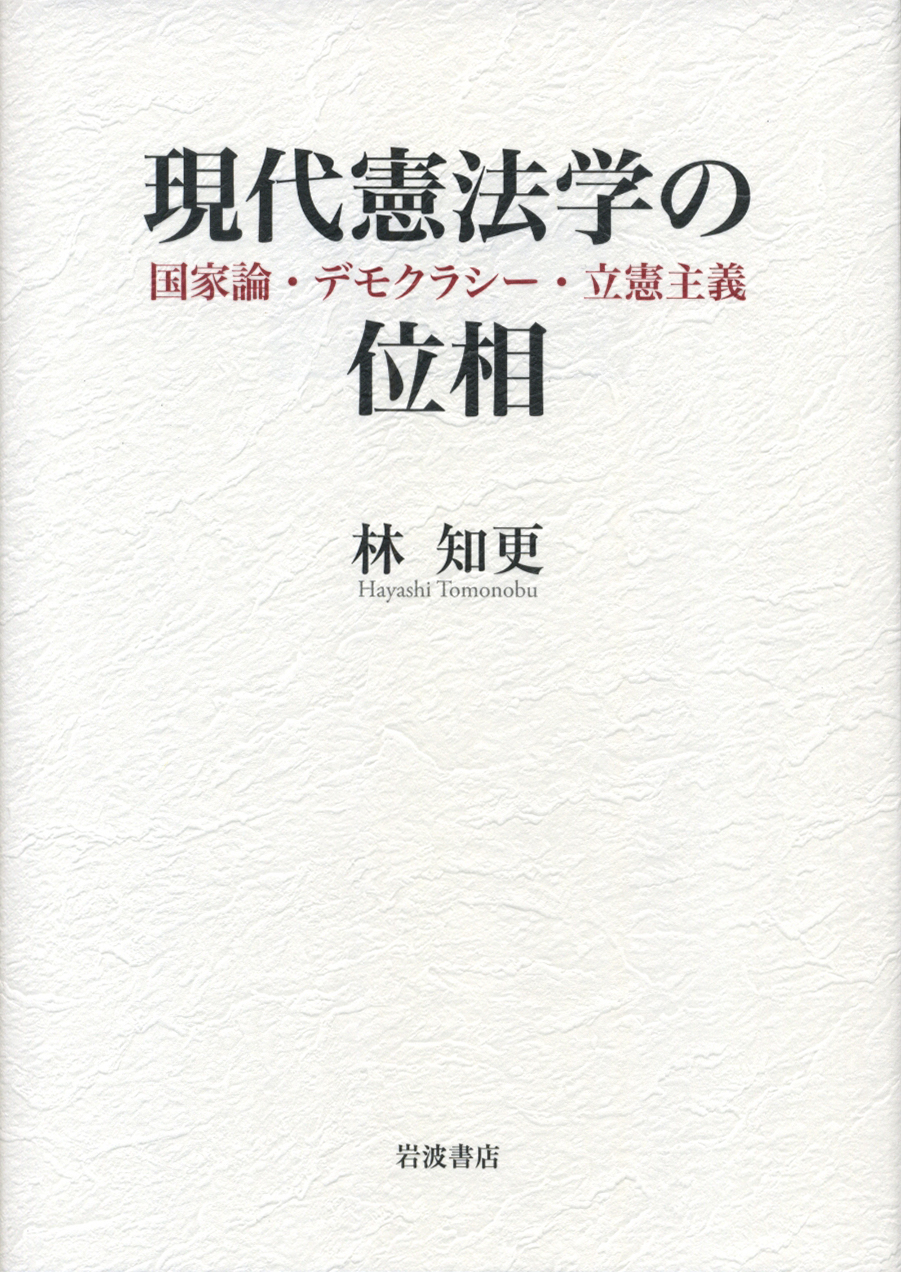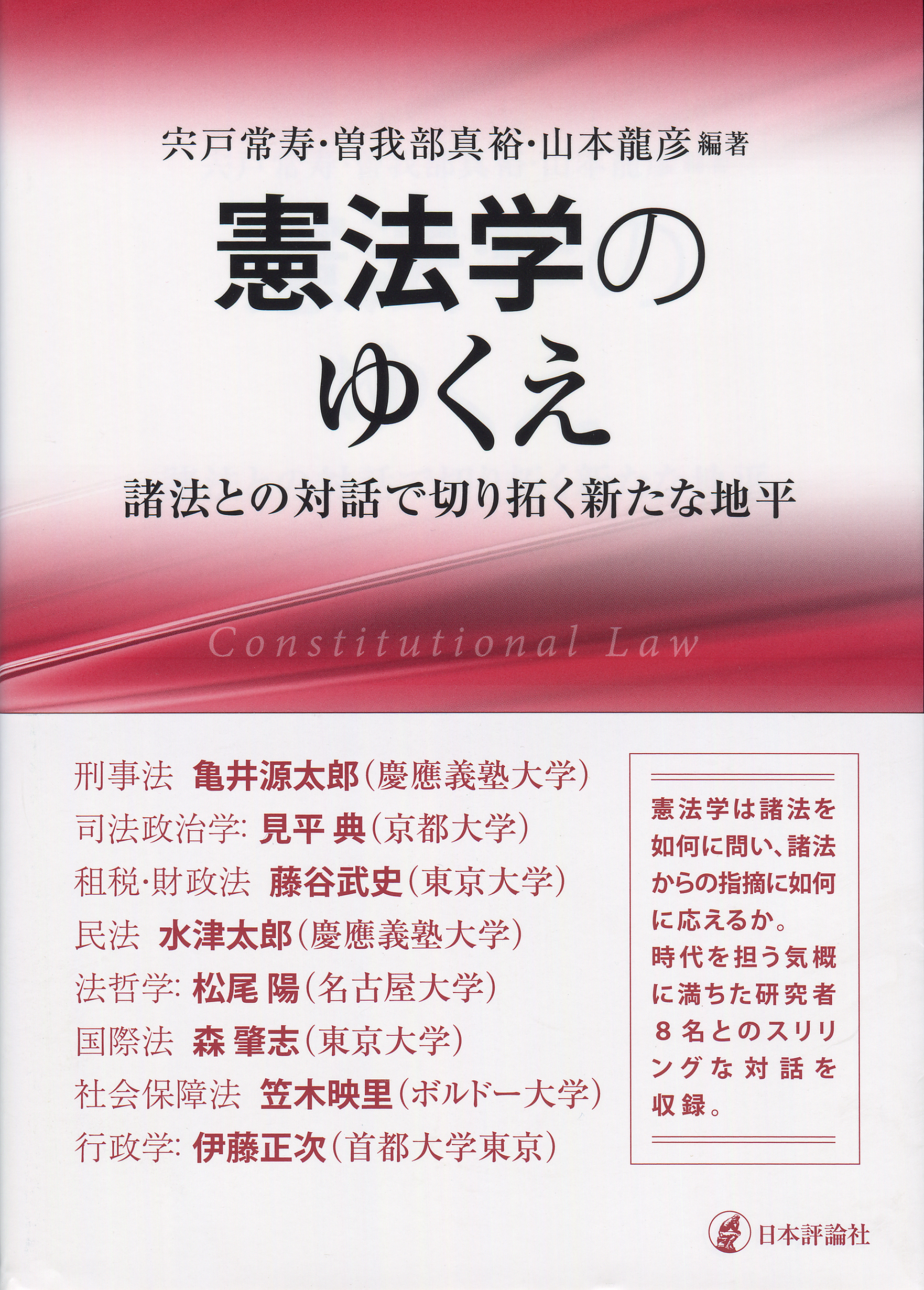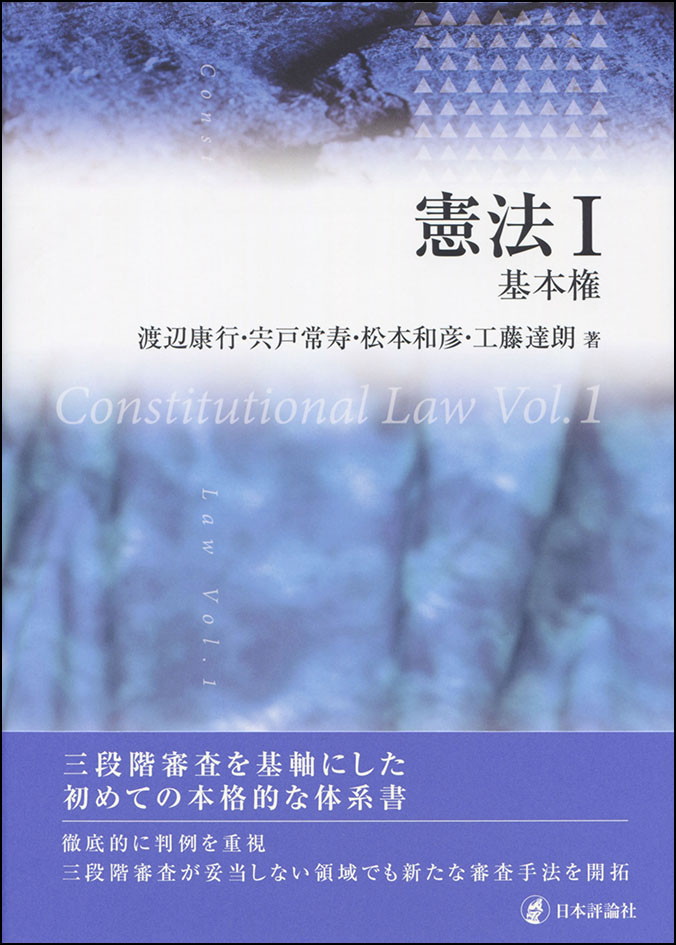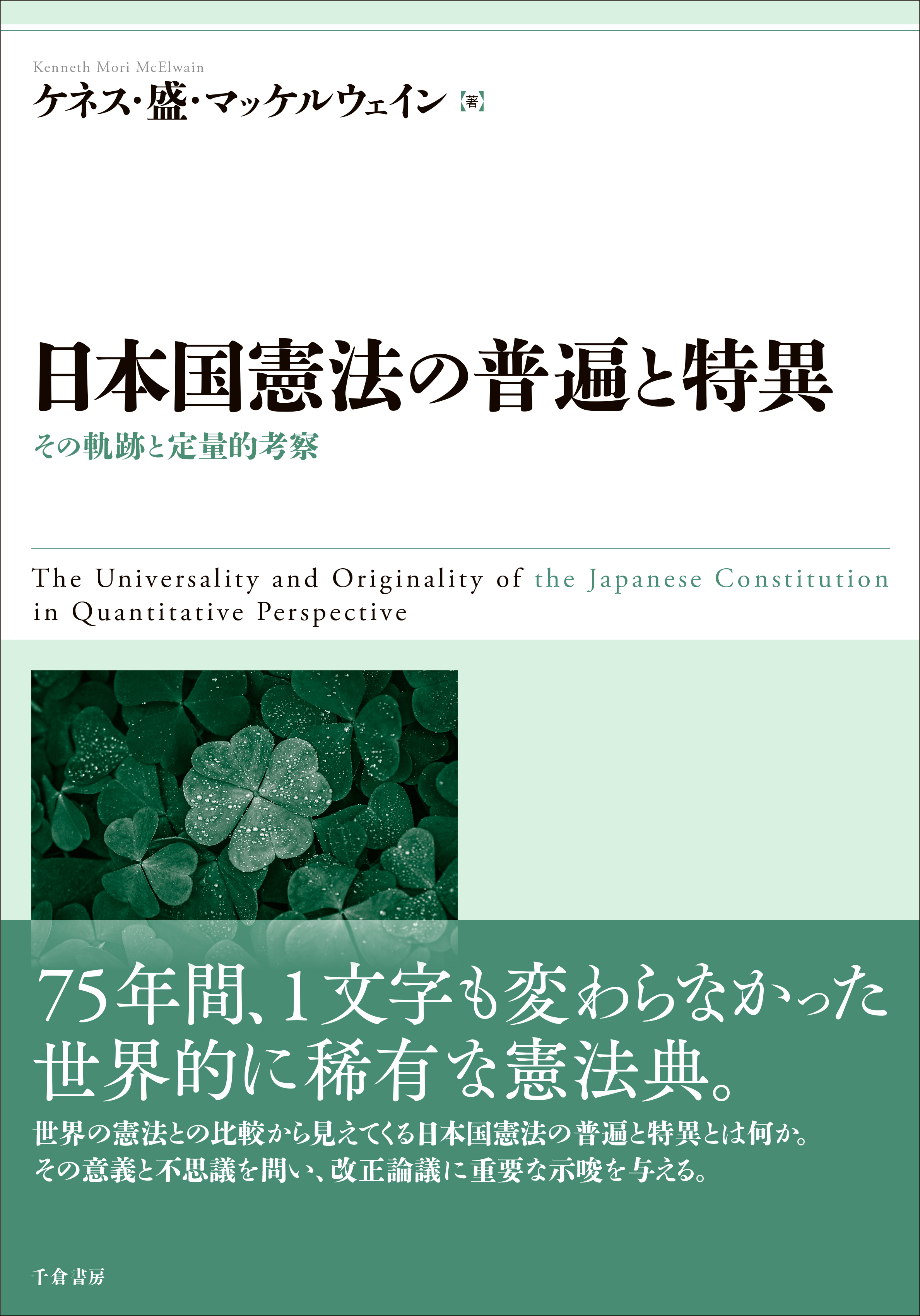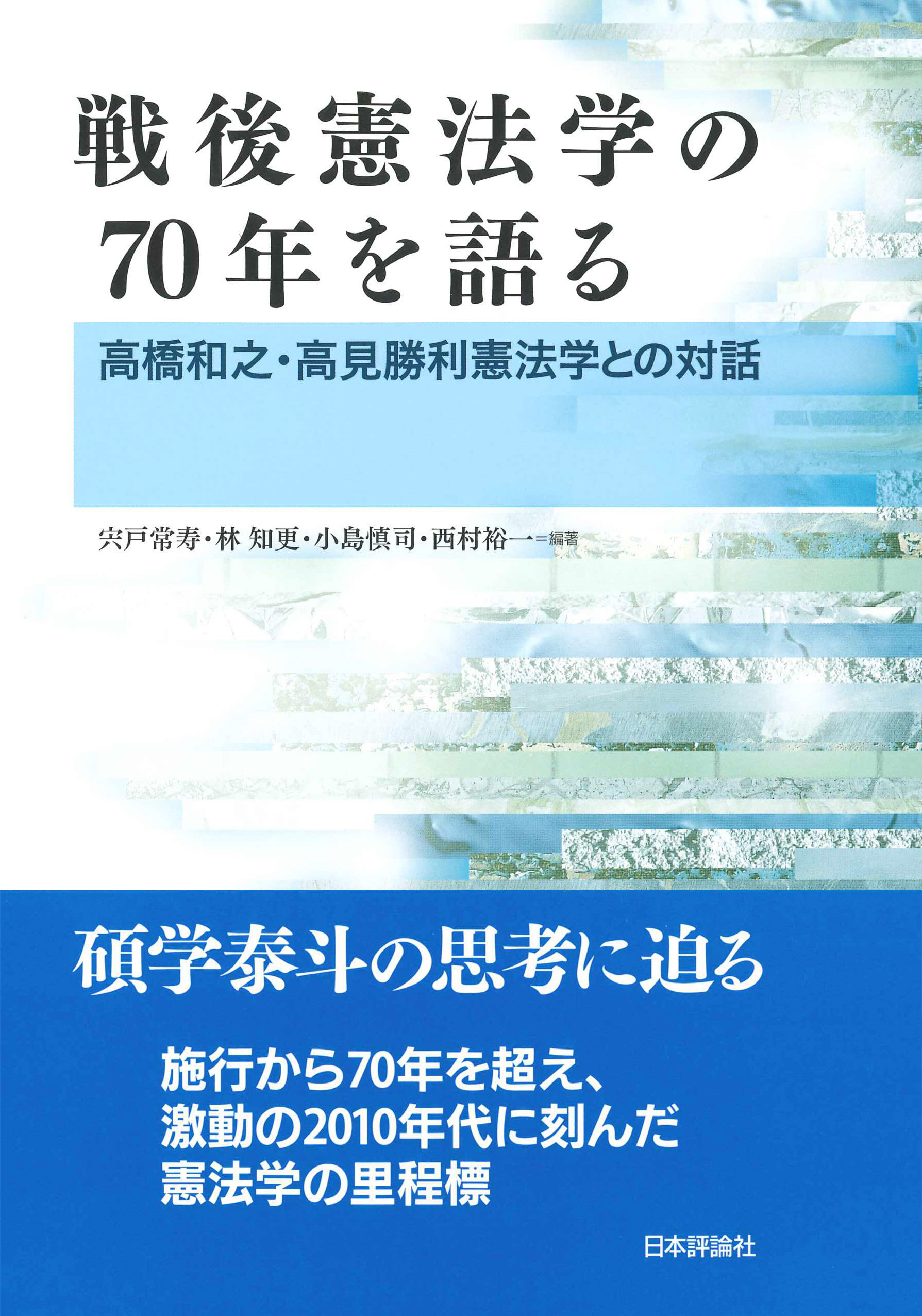
Title
Sengo kenpōgaku no 70-nen o kataru (Discussing 70 Years of Postwar Constitutional Studies - Dialogue on Constitutional Studies with Kazuyuki Takahashi and Katsutoshi Takami)
Size
324 pages, A5 format
Language
Japanese
Released
July, 2020
ISBN
978-4-535-52453-8
Published by
Nippon Hyoron sha co., Ltd.
Book Info
See Book Availability at Library
Japanese Page
This year (2021) marks 74 years since the Constitution of Japan was enacted in 1947. The magnitude of the changes that Japanese society has undergone during this period is staggering. (You may have seen movies and documentaries about Japan right after the end of World War II, or during the period of high economic growth, and asked yourselves, "Is this really the same country as the Japan we know today?")
As long as laws have defined the rules that are essential to people’s lives in society, they have been able to change with society. The Constitution is no exception. Upon hearing this, I am sure some of you will refute such a sentiment by saying, "But the Constitution of Japan has never been amended!" However, you must remember that the Constitution does not only refer to the provisions contained in the law called the “Constitution of Japan.” Only when the provisions of the law are understood and interpreted by a variety of people and then actually applied and operated accordingly can they, for the first time, function to govern actual lives of people in society. In fact, there is a wide range of possibilities in terms of understanding, interpretation, application, and operation of the law. If you compare, for example, textbooks on the Constitution written in the early postwar period with current ones, you will find that the ways in which the Constitution is understood and discussed has changed significantly over time. In addition, if you access court precedent materials, you will begin to realize that the courts have changed their ways of thinking and enriched the constitution as they worked through various cases.
The 70 plus years of the Constitution of Japan’s existence has, by no means, been an easy road. Since the Constitution is the supreme law of the nation and sets basic principles and restrictions on various legal areas, the breadth of problems experienced by people in society who are related to the Constitution in some way is actually quite wide. For each issue, there are conflicting views regarding the interpretation of the Constitution. The various actors involved who influence the understanding and operation of the Constitution are not restricted to the courts, but include government, administration, the Diet, and civil society. Furthermore, Constitutional study itself is also one of these actors. It is not uncommon, therefore, for these various actors to pursue different ideas. The current shape of the Japanese Constitution, as you perceive it, has been shaped through a complex process, and I believe that it will continue to change in this way throughout time.
If that is the case, in order to understand the present Constitution of Japan and to think about what its most desirable state would be in the future, it is not enough to solely look at the provisions of the Constitution or read textbooks. It is necessary, instead, to also know the history of the Constitution, particularly in the aforementioned sense. Although there is a variety of approaches to gaining such knowledge, for this volume we decided to interview Kazuyuki Takahashi and Katsutoshi Takami, two masters of Constitutional study, about their academic progress. Their academic careers—having both been born in the early 1940s and spending most of their lives alongside the Japanese Constitution—overlap with the history of the Constitution itself.
Unlike governments and courts, the actor that is Constitutional study cannot make its own authoritative decisions. Instead, this actor has the advantage of being able to think intelligently and thoroughly about the Constitution itself, and thus can attempt to create a coherent overall concept across various constitutional issues. By taking the viewpoint of Constitutional study, important aspects of the Japanese Constitution are revealed here.
In this volume, four mid-career researchers—all of whom have been taught by these two contributors—ask these experts questions, listen to their stories, and attempt to respond to them as representatives of the younger generation. There is no greater joy than for you, the reader, to read about the intellectual drama that has shaped the Constitution’s last 70 years, as presented in the dialogues between the different generations that are detailed in this volume.
(Written by HAYASHI Tomonobu, Professor, Institute of Social Science / 2021)



 Find a book
Find a book


